|

'Social Climbing'—Join Us At the First-Ever CLICK Conference
There’s still time to register for the first-ever CLICK Conference! Learn about the new realm of social media from a special group of
experts from outside and within the optical field.
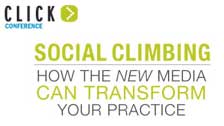 The
Conference, sponsored exclusively by Hoya Vision Care, will be held Oct. 7 in Las Vegas, 8 a.m. to 10 a.m., just prior to the opening of
International Vision Expo West. The
Conference, sponsored exclusively by Hoya Vision Care, will be held Oct. 7 in Las Vegas, 8 a.m. to 10 a.m., just prior to the opening of
International Vision Expo West.
The CLICK Conference keynoter is John Garnin of YELP.com, certainly one of the most influential forces in the area of customer
recommendations and consumer reviews. Also featured are: Brad Childs, executive vice president and COO of Eyetique, the 7-unit Pittsburgh
optical boutique; Nathan Bonilla-Warford, OD, FAAO, of Bright Eyes Family Vision Care, Tampa, Fla., a social media evangelist and chair of
the social media committee of the College of Optometrists in Vision Development, and Kelly Kerksick, OD, Director of Professional Services,
Vision Source.
The CLICK Conference program is geared to ECPs and optical retailers. Space is very limited, so check out the details and
register now.

An Apps Culture Is on The Rise: The Latest Report from Pew/Nielsen
NEW YORK
—The emergence of mobile media and the rise of an “apps culture” is shifting the nature of communications for most Americans,
raising questions about how mobile will play a part in future communications from all health care providers, including eyecare professionals.
Overall, cell phone use in the U.S. has increased dramatically over the past decade. Fully eight in ten adults today (82 percent) are cell phone
users, and about one-quarter of adults (23 percent) now live in a household that has a cell phone but no landline phone.
Some 35 percent of U.S. adults have software applications or “apps” on their phones, yet only 24 percent of adults use those apps.
Many adults who have apps on their phones, particularly older adults, do not use them, and 11 percent of cell owners say they are not sure if their
phone is equipped with apps. But among cell phone owners, 29 percent have downloaded apps to their phone and 13 percent have paid to download
them.
These facts and others are reflected in the latest report from Pew Internet Project, co-authored by
Pew and Nielsen Media. “An apps culture is
clearly emerging among some cell phone users, particularly men and young adults,” said Kristen Purcell, associate
director for research at the Pew Internet Project. “This is a pretty remarkable tech-adoption story, if you consider that there was no apps culture until two years ago,” added Roger
Entner, co-author of the report and senior vice president and head of research and insights for Telecom Practice at Nielsen. “Every metric we
capture shows a widening embrace of all kinds of apps by a widening population.“
The most recent Pew Internet Project survey asked a national sample of 1,917 cell phone-using adults if they use apps and how they use them.
Broadly, the results indicate that while apps are popular among a segment of the adult cell phone using population, a notable number of cell owners
are not yet part of the emerging apps culture.
- 35% of adults have cell phones with apps, but only two-thirds actually use them
- Apps users are younger, more educated, and more affluent than other cell phone users
- App use still ranks relatively low when compared with other uses of cell phones
- One in ten adult cell phone users (10 percent) had downloaded an app in the past week; 20 percent of cell phone users
under age 30 download apps this frequently
- Among cell phone users with apps, the average adult has 18 apps on his or her phone
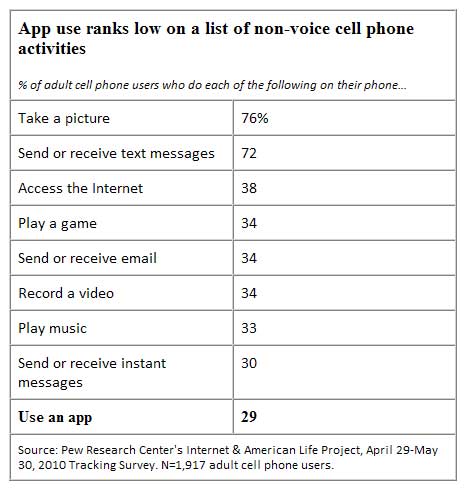

How to Write a Really Effective 'About' Page
NEW YORK—An element of all successful websites, the About Page is a critical communication tool about your company, your practice, your
team and your philosophy. Courtesy of the Jacob Gube, the founder of
Six Revisions,
a site targeting web designers and developers, here are
some insights and practical advice concerning the About page, the place where site users go to learn more about the site they’re on.
Gube writes, if
you want to convert visitors to users, capture opportunities to work with people, and give your regular users a deeper appreciation of what your site
does, a well-written About page is your ticket. Readers will visit this section for many reasons and with various questions they want answered,
but your objective is the same: to inform them why they are on the site or why they should be on the site. Gube identifies three types of About page readers.
Group 1: First Time Visitors
This group may have been referred to your site by a friend, or may have stumbled upon one of your web pages through a search engine
result or social media service. They liked what they saw and they want to decide if they should keep coming back. Your About page, then,
is an opportunity to convert a visitor to a user.
Group 2: Regular Users
Your consistent readers or registered web app users want to know more about the site that they often use. The About page becomes a means to
give them reasons to keep coming back and a way to develop a greater appreciation of your site.
Group 3: People Who Want to Work with You
This group can be advertisers, content contributors, site owners in your niche, job seekers, and researchers or suppliers. This group is
interested in two things: facts and your history. For example, advertisers might want to know if your site covers the demographic they’re
targeting. Content contributors will be interested in finding out about what your site publishes to determine if the content they wish to
contribute will fit with your audience.
Your About page should answer the
Five Ws:
- Who are you?
- What do you do?
- When did you start doing what you’re doing?
- Where are you?
- How are you accomplishing what you claim to do?
|

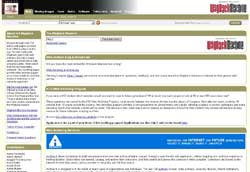
Want to find original eyeglass diagrams from the 1900s? Research antique optical inventions? Find references to Bruce Springsteen
concerts from the ‘90s? Billions of website pages are virtually archived in this amazing site. The Wayback Machine at The Internet Archive
lets you browse through over 150 billion web pages archived from 1996 to a few months ago. Other parts of the site feature content
from libraries all over the world for articles from a few centuries back. The Internet Archive is a 501(c)(3) non-profit that was
founded to build an Internet library. Its purposes include offering permanent access for researchers, historians, scholars, people with
disabilities, and the general public to historical collections that exist in digital format. Founded in 1996 and located in San Francisco
the Archive has been receiving data donations from
Alexa Internet and others. In late 1999, the organization started to grow to include
more well-rounded collections. Now, the Internet Archive includes texts, audio, moving images, and software as well as archived web pages
in its collections, and provides specialized services for adaptive reading and information access for the blind and other persons with
disabilities.

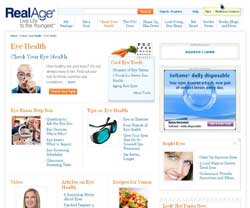
An informative general health care site, RealAge.com offers a range of science-based health and lifestyle content articles and
straightforward info for patients on a variety of topics, including a major section on Eye Health. Sections explain various eyecare professionals,
vision conditions and terminology. It also features patient comments about their experiences with vision issues, quick quizzes and reference
info. Affiliated with the Hearst Women’s Netwok and Hearst Digital Media, the site is a lively and resource-packed destination for
patients as well as ECPs.

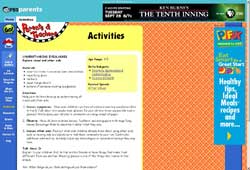
PBS.org/parents
PBS' “Arthur" character series has long featured a range of ideas and tools for explaining vision and eyeglasses to children. PBS's
parent and teacher resource sites offers a series of videos and other education guides that can help explain what it's like to wear glasses,
why glasses are necessary, all in ways that kids can understand. Many tools can be adapted by eyecare professionals working with children's vision
and eyewear.


RandyKazandy.com
A delightful book, “Randy Kazandy, Where Are Your Glasses?” is written by Rhonda Fischer and illustrated by Kim Sponaugle
and its website features a range of fun and informative activities for kids, parents and teachers who are looking for ways to explain
what it's like to wear glasses. The site features a sneak peak of the book, and kids' reviews. The book, which helps kids adjust to
eyeglasses in a fun and clever way, has been approved by Parents magazine, Old Schoolhouse magazine and Stories for Children magazine.
The Randy Kazandy book is available for sale to eyecare professionals through
Jobson Research
and has inspired a new eyewear line to debut next month from Ooh La La Eyewear.
|